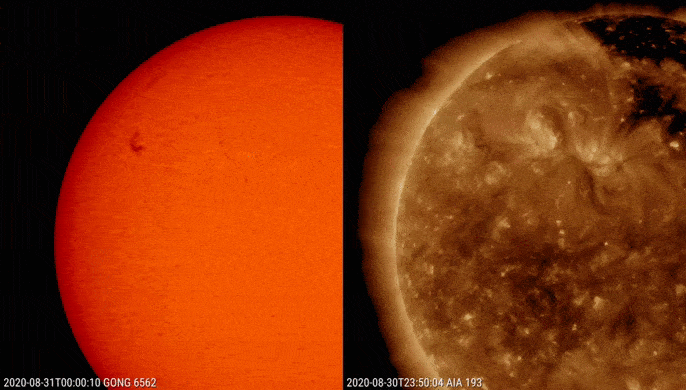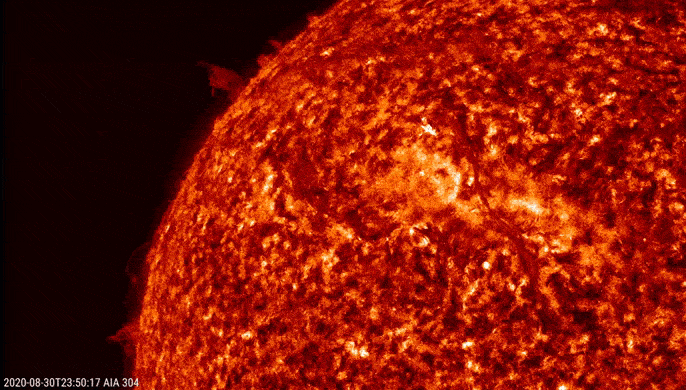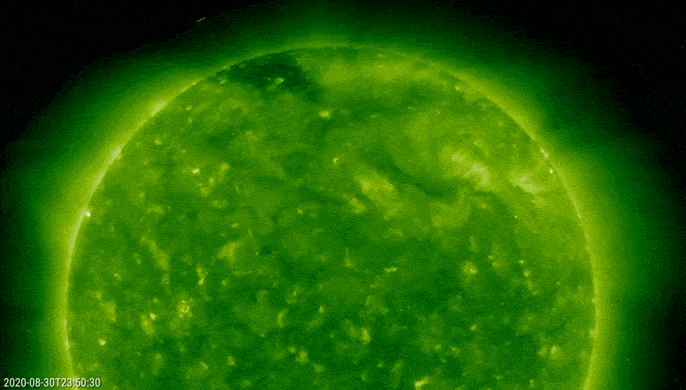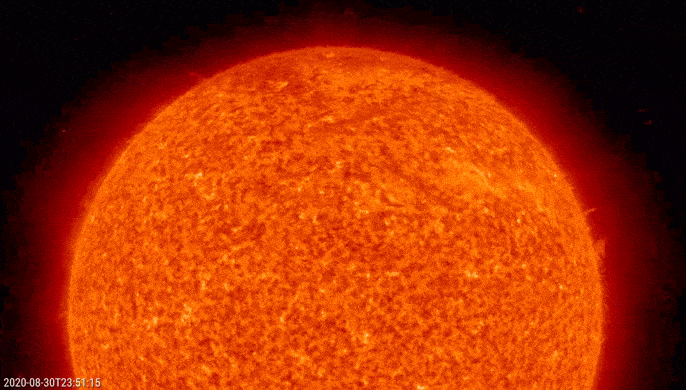Solar filaments are clouds of charged particles ("plasma") above the solar surface squeezed between magnetic regions of opposite polarity. Being cooler and denser than the plasma underneath and their surroundings, they appear as dark lines when seen on the solar disk and as bright blobs when seen near the solar limb (then they are called "prominences"). Special filters are required to observe these features, and one such a filter is the Hydrogen-alpha (H-alpha) line in the red part of the solar spectrum.
Long filaments are known to eventually erupt, as the surrounding magnetic fields usually become unstable at some point. Early on 31 August however, magnetic fields around a relatively small filament chunck became unstable, resulting in the eruption of the short filament. No significant x-ray flaring was associated with this event. A weak non-earth directed coronal mass ejection was observed. Some of the material rained back to the solar surface along the magnetic field lines.
The imagery underneath first shows a comparison between H-alpha from the Global H-alpha Network (GONG, ground-based) at relatively cool temperatures of about 10.000 degrees, and in extreme ultraviolet (space based, SDO) at temperatures near 1.25 million degrees. The before and after images clearly show the spectacular absence of the filament. The EUV image also show that the filament was longer than what could be expected from the H-alpha imagery. It is likely that this filament channel was filled for the most part with plasma having a higher temperature, such that it was well visible in EUV (higher temperature filters), but only a small part visible in H-alpha (the part with the "coldest" temperature).

The next view is also in extreme ultraviolet, but at lower temperatures of about 80.000 degrees (SDO/AIA 304) showing much better the filament and the ejected loop-like structure of cold plasma that is being ejected.

Finally, a view of the event as recorded by the STEREO-A spacecraft, which is at about the same distance from the Sun as the Earth, but trailing the Earth by about 63 degrees. This means that the STEREO-A had a more direct (straight) view on the eruptive area than visible from Earth. Also here, the erupting loop is best visible in the low temperature filters (EUVI 304), whereas the coronal dimmings (transient holes in the corona caused by the ejected material) are better visible in the high temperature EUV filters (EUVI 195). The coronal dimmings are better visible by STEREO-A than SDO because of the better viewing direction.







